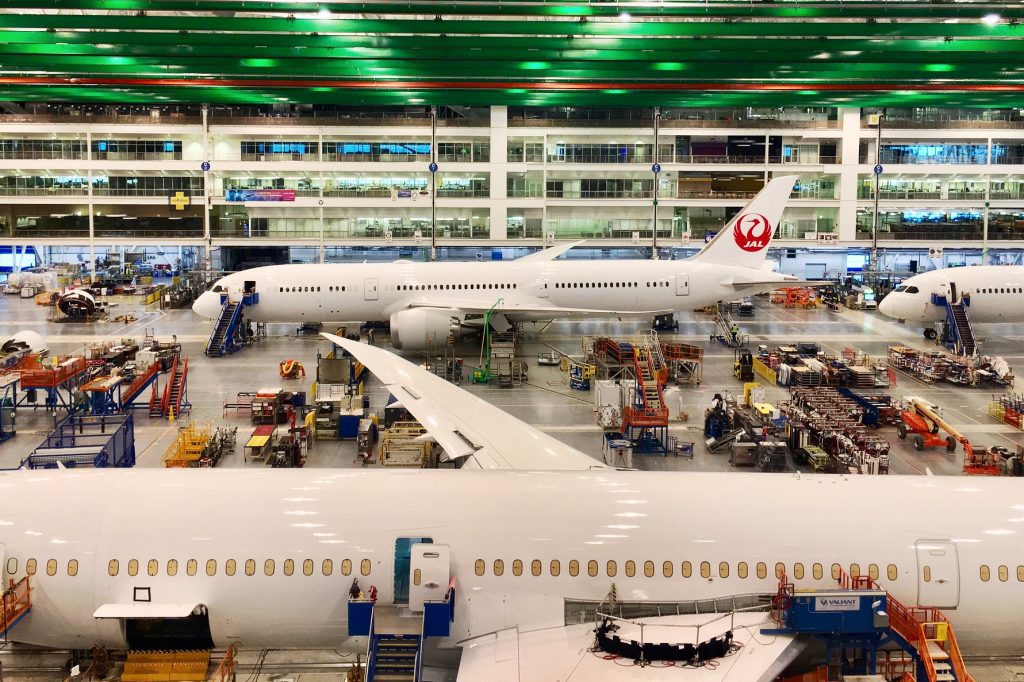
Skift Take
A Boeing engineer alleged he saw “people jumping on pieces of the airplane” when manufacturing the 787, making it prone to defects.
An engineer at Boeing claimed the plane maker dismissed repeated concerns about the quality control of the 787 Dreamliner and 777, some of the most used widebodies in the airline industry.
Sam Salehpour, who is a quality engineer at Boeing and has been an aerospace engineer for around four decades, filed a complaint with the Federal Aviation Administration about these concerns January 29. The claims were made public Tuesday and federal authorities are currently investigating them.
Salehpour joined Boeing in 2007, originally starting out in contract roles. He is still employed by the company, Katz Banks Kumin — the law firm representing him — confirmed to Skift.
“Voluntary reporting without fear of reprisal is a critical component in aviation safety,” the FAA said in a statement. “We strongly encourage everyone in the aviation industry to share information. We thoroughly investigate all reports.”
Salehpour’s claims are unrelated to the 737 Max 9, which is facing federal scrutiny after a door plug suddenly blew off an Alaska Airlines flight mid-air. Boeing has been under increased scrutiny from the FAA since the Alaska incident.
Gaps in the 787 Dreamliner
In a call with reporters, Salehpour said engineers at the plane maker used an “unmeasured and unlimited amount of force” to close some of the gaps in the fuselage of 787s. Salehpour said on the call that there were “people jumping on pieces of the airplane” to close these gaps, making the fuselage prone to defects.
“That’s not how you build an airplane,” Salehpour said on the call.
Boeing “hid the problem by pushing the pieces with force to make it look like the gap didn’t exist,” Salehpour said.
Lawyers for Salehpour also said he witnessed debris drilled into the joints of more than 1,000 787 planes.
“These planes are being built improperly and will probably experience fatigue and failure far earlier in their life than airlines are being told,” said Lisa Banks, one of the lawyers representing Salehpour.
The lifespan of a 787 should be around 50 years, or 44,000 flights, Boeing told Skift.
In a statement Tuesday, Boeing disputed some of Salehpour’s claims and said it has worked to improve the production and quality control processes of the 787.
“This continuous improvement has resulted in higher quality and has had no impact on durability or safe longevity of the airframe. Our team’s work has included exhaustive testing and analysis to ensure that manufacturing process updates maintain the performance, full projected lifespan and strength of the airplane,” Boeing’s statement said. “The comprehensive approach used to evaluate improvements to our production process includes and encourages dissenting viewpoints. This work has been completed with full transparency and under the oversight of the FAA.”
The 787 Dreamliner, which uses composite fuselages, rolled out in 2011 and has seen a number of production issues. The FAA halted the deliveries of 787 Dreamliners in 2021 due to issues with these gaps — Salehpour is claiming that the issues are still there. The FAA also grounded the plane in 2013 after a series of safety incidents.
Boeing has maintained that it resolved the issues Salehpour raised, saying the aircraft has been “subject to rigorous engineering examination under FAA oversight.”
“These claims about the structural integrity of the 787 are inaccurate and do not represent the comprehensive work Boeing has done to ensure the quality and long-term safety of the aircraft,” Boeing said in a statement.
Salehpour’s lawyers said on the call that the FAA told them it was surprised to learn the gaps in the 787 fuselages were still an issue.
Facing Retaliation
Lawyers for Salehpour alleged that after he raised concerns he was removed from the 787 team and placed on the 777 one, where he observed that parts were not installed properly. He said engineers had to continue 777 production despite the issues.
Boeing did not comment on Salehpour’s claims related to the 777.
Salehpour’s lawyers also said he was excluded from meetings and excluded from travel opportunities with his team. He also faced poor performance evaluations, Salehpour’s lawyers alleged.
His lawyers also claimed that Salehpour had been “threatened with physical violence” and “continues to face threats.”
Salehpour is set to testify about these claims to the Senate April 17. His lawyers said all the documentation related to Salehpour’s claims will be made public at the hearing.
Boeing did not immediately respond to a request for comment on the claim that Salehpour was threatened with physical violence.
Boeing shares fell by around 2% after Salehpour’s allegations became public.
